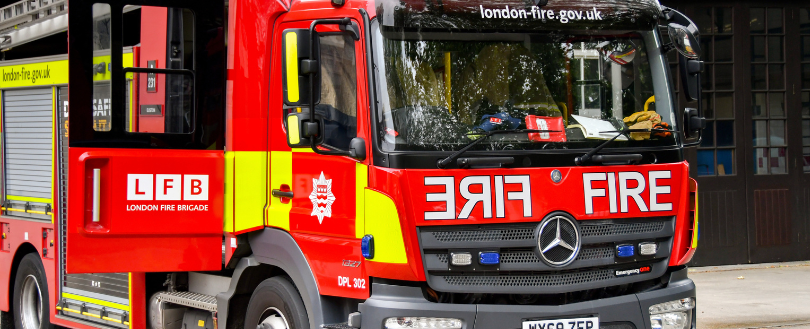
London Fire Brigade elevates safety standards with revolutionary equipment post-Grenfell Inquiry
Like it? Share it!
13 March 2024
The London Fire Brigade (LFB) has taken significant strides in strengthening its operational capabilities post the Grenfell Tower Inquiry, with a focus on enhancing safety measures and response efficiency. Among the notable upgrades is the deployment of the tallest turntable ladders (TLs) ever utilised by the service. Standing at a height of 64 meters, these TLs can ascend to 23 stories, a significant improvement from the previous 32-meter ladders. Recently, one of these remarkable TLs was deployed during a fire incident at Forest Gate police station, showcasing its efficacy in high-rise scenarios.
Firefighter Jonathan Birks praised the new TLs, highlighting their ability to swiftly evacuate multiple casualties from tall structures, with provisions for attaching stretchers to aid in the movement of individuals with spinal injuries. Presently, three 64-meter TLs are stationed strategically at Old Kent Road, Dagenham, and Wimbledon, doubling as water towers during firefighting operations.
In addition to the introduction of towering TLs, the LFB has expanded its resource with a spectrum of cutting-edge equipment. Fire escape hoods, a vital addition since the 2019 recommendations, have proven instrumental in evacuating approximately 200 individuals from smoke-laden environments. These hoods offer crucial filtration for up to 15 minutes, safeguarding against harmful carcinogens present in smoke, as explained by Firefighter James Bryant.
Moreover, the establishment of a dedicated drone team following the Grenfell tragedy has yielded invaluable support in search and rescue missions. Equipped with thermal imaging and optic cameras, drones facilitate real-time monitoring and aid in locating missing persons, even in the most challenging environments, as highlighted by Station Officer Guy Tillotson.
Further enhancements include the deployment of modern breathing apparatus sets, featuring lighter designs and enhanced cleaning capabilities. Temporary sub-officer Kat Wilson elaborated on the functionalities of these sets, including the ability to share air among firefighters in critical situations. Additionally, the integration of advanced radios and the Fire Survival Guidance (FSG) app, developed in response to inquiry recommendations, has revolutionised communication protocols within the LFB, streamlining information dissemination and accessibility for both ground personnel and control rooms.
Deputy Assistant Commissioner Joanne Smith underscored the significance of these technological advancements, emphasising their role in replacing traditional voice communications with streamlined digital platforms. Moreover, the accessibility of the FSG app to key emergency services such as the Metropolitan Police and London Ambulance Service further enhances collaborative efforts during emergency responses.
The recent rollout of modernised command units signifies the LFB's commitment to staying at the forefront of emergency response capabilities. These multifunctional units equipped with state-of-the-art communication systems serve as command hubs, facilitating seamless coordination and decision-making during critical incidents.
In conclusion, the London Fire Brigade's adoption of advanced equipment underscores its dedication to enhancing public safety and response effectiveness in the face of evolving challenges. With a focus on innovation and continuous improvement, the LFB remains steadfast in its mission to protect lives and property across the capital.
View the SOURCE here.
Our eNews provides regular insight into industry trends, news headlines, and product and service information. For more articles like this Subscribe to our enews.
Related training
Related news
-
Business Owner Fined for Breaching Fire Safety Legislation
06 October 2025
Related resources
-
Passenger Service Vehicle - Guidance Note
05 September 2023
-
FIA Guidance on Fire Procedures for COVID 19
08 January 2021
